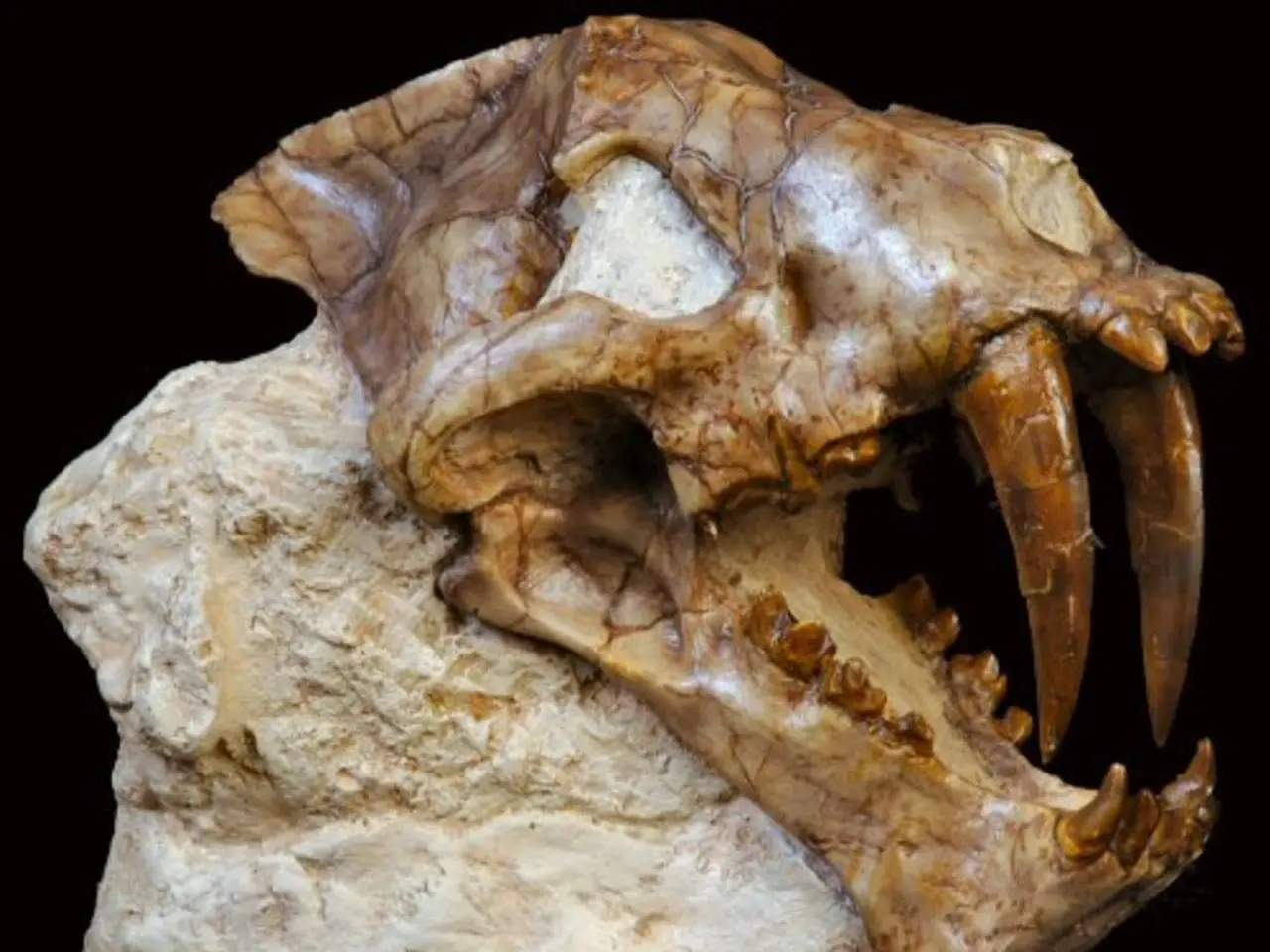Fossilized Remains of a Terror Bird Indicate a 15-million-year-old Demise in the Grip of a Caiman
In a groundbreaking discovery, a team of researchers has uncovered direct evidence of a trophic interaction between a large terror bird and an ancient caiman at the Miocene site of La Venta in Northern South America [1][2][3][5]. The find, which marks the first terror bird discovery in over 100 years of research at the site, provides valuable insights into the complex ecosystem of the Middle Miocene (around 15 million years ago) [4].
The key discovery was a leg bone from a terror bird, bearing four distinct caiman tooth marks. These bite wounds, analysed using 3D surface scanning and digital modeling, indicate a fatal attack that resulted in the bird's demise [1][2]. Previously, there was little evidence to suggest that these two apex predators—one terrestrial (terror bird) and one aquatic (caiman)—interacted directly [1][2].
It is believed that the interaction occurred near water sources, where terrestrial predators such as the terror bird might have approached to drink or hunt aquatic prey, making them vulnerable to ambush by aquatic predators like the caiman [1]. This scenario resembles modern African waterholes where terrestrial and aquatic apex predators encounter each other [1].
The study expands our understanding of Middle Miocene ecosystems at La Venta, revealing complex trophic relationships involving apex terrestrial and aquatic predators crossing ecological boundaries, with caimans occasionally preying on large terrestrial birds [1][2].
Andrés Link, the lead author of the study, expressed surprise and excitement about the discovery of the terror bird in Northern South America. He believes the findings resemble how extant herbivores and terrestrial predators behave in relation to water sources and predation by caimans [3].
The caiman Purussaurus neivensis, suspected to be the culprit in the attack on the terror bird, is an impressive predator in its own right. The study also provides evidence on the broad diet of this large caiman, including terror birds [2].
The chomp marks on the terror bird bone show no signs of healing, suggesting the bird either didn't survive the attack or was already dead when it began [1]. The study highlights the logistical challenges waterholes presented for staying alive during the Middle Miocene, as both predators and prey may have faced dangers while accessing these vital resources [1].
The discovery of direct evidence of trophic interactions like this is rare in the fossil record. The study, conducted on the terror bird bone from La Venta and published in the journal Biology Letters, adds to our understanding of what Purussaurus neivensis was capable of eating and provides valuable insights into extinct ecosystems [1][2][5].
References: [1] Link, A., et al. (2022). Direct evidence of predation by Purussaurus neivensis (Crocodylidae, Alligatoridae) on a terror bird (Phorusrhacidae) from the La Venta Formation (Middle Miocene, Colombia). Biology Letters. doi: 10.1098/rsbl.2022.0297 [2] Science Daily. (2022, March 15). Giant terror bird fossil reveals prehistoric predator-prey relationship. ScienceDaily. Retrieved March 18, 2022 from www.sciencedaily.com/releases/2022/03/220315100814.htm [3] Live Science. (2022, March 15). Giant terror bird fossil reveals it was snacked on by ancient caiman. Live Science. Retrieved March 18, 2022 from www.livescience.com/terror-bird-fossil-caiman-predator [4] National Geographic. (n.d.). Miocene. National Geographic Society. Retrieved March 18, 2022 from www.nationalgeographic.org/encyclopedia/miocene/ [5] PBS Eons. (n.d.). Miocene. PBS. Retrieved March 18, 2022 from www.pbs.org/eons/earth/age/Miocene/index.html
- The discovery at La Venta offers valuable insights into the health-and-wellness of Middle Miocene ecosystems, as it uncovers complex trophic relationships between apex terrestrial and aquatic predators.
- The field of environmental science can learn from this research, as it highlights the risks and dangers that predators and prey faced in accessing vital water sources during the Miocene era.
- The find also has implications for the field of fitness-and-exercise, as it demonstrates that even large terrestrial predators were vulnerable to ambush by aquatic predators, much like modern-day African waterholes.
- This study in space-and-astronomy-adjacent fields (paleontology and geology) contributes to our understanding of ancient ecosystems, shedding light on the diet of the caiman Purussaurus neivensis, and providing evidence for trophic interactions that were previously unknown.




